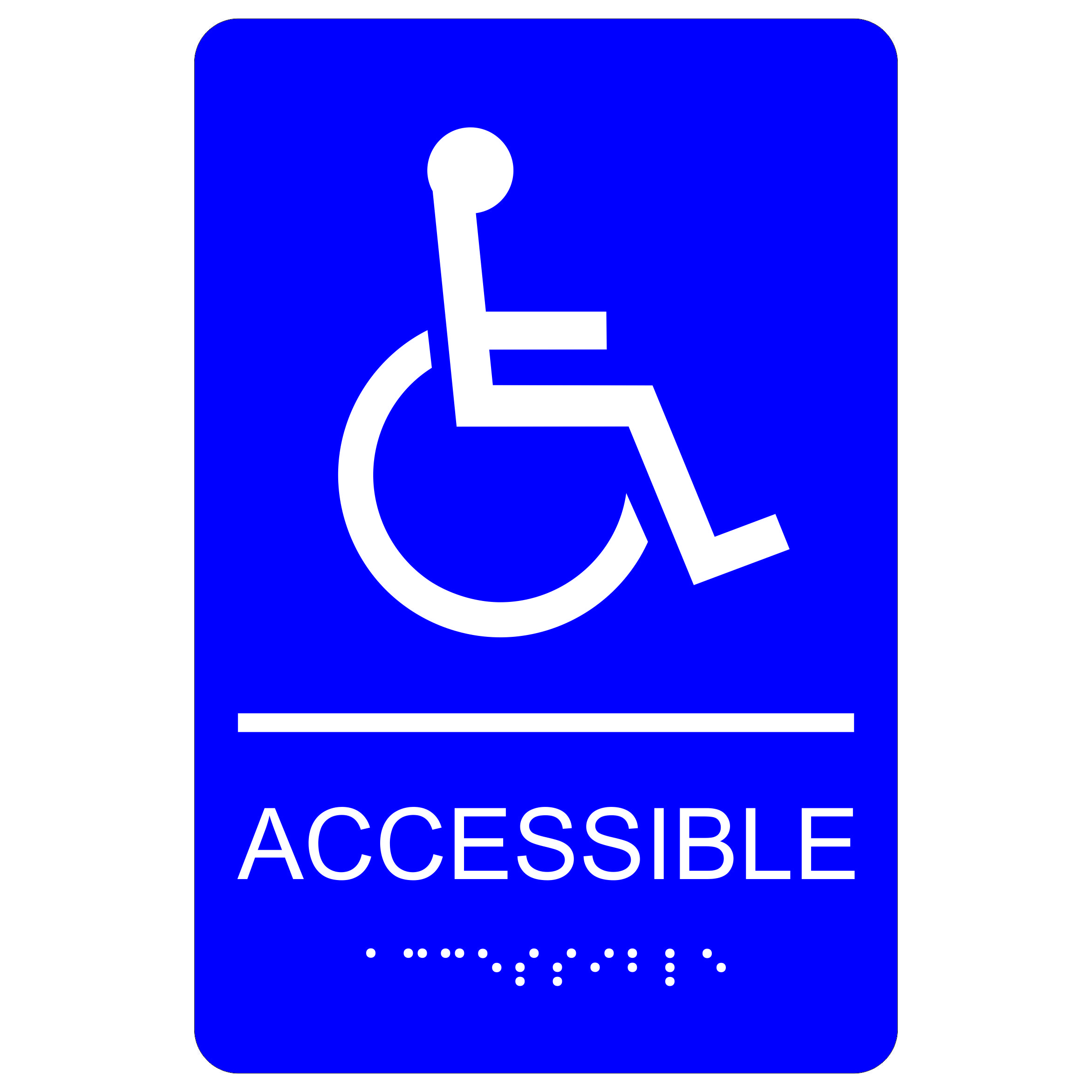Checking Out Creative Layouts for Efficient ADA Signs
Checking Out Creative Layouts for Efficient ADA Signs
Blog Article
Checking Out the Secret Features of ADA Signs for Enhanced Access
In the realm of availability, ADA indications function as quiet yet powerful allies, making certain that areas are navigable and inclusive for individuals with disabilities. By incorporating Braille and tactile elements, these indications damage barriers for the aesthetically impaired, while high-contrast color pattern and readable fonts satisfy varied aesthetic needs. Their strategic placement is not arbitrary but instead a computed initiative to facilitate seamless navigation. Beyond these functions lies a much deeper narrative regarding the advancement of inclusivity and the recurring dedication to producing equitable rooms. What extra could these indicators signify in our quest of universal ease of access?
Relevance of ADA Compliance
Ensuring conformity with the Americans with Disabilities Act (ADA) is critical for promoting inclusivity and equivalent accessibility in public spaces and workplaces. The ADA, passed in 1990, mandates that all public facilities, companies, and transportation solutions fit people with impairments, guaranteeing they appreciate the exact same rights and possibilities as others. Compliance with ADA standards not just satisfies legal commitments yet also enhances a company's credibility by demonstrating its dedication to diversity and inclusivity.
Among the essential aspects of ADA conformity is the application of available signage. ADA indicators are designed to make certain that individuals with specials needs can quickly browse with areas and structures. These indications should comply with certain guidelines concerning size, font, color contrast, and positioning to ensure presence and readability for all. Appropriately applied ADA signs assists remove obstacles that people with handicaps often run into, thereby promoting their self-reliance and confidence (ADA Signs).
Furthermore, adhering to ADA laws can reduce the threat of possible fines and legal repercussions. Organizations that stop working to comply with ADA guidelines may face suits or penalties, which can be both monetarily challenging and harmful to their public picture. Therefore, ADA conformity is essential to cultivating a fair atmosphere for every person.
Braille and Tactile Elements
The consolidation of Braille and responsive components into ADA signage symbolizes the concepts of ease of access and inclusivity. These attributes are critical for people who are visually damaged or blind, allowing them to navigate public rooms with higher freedom and confidence. Braille, a tactile writing system, is vital in providing written information in a layout that can be quickly perceived via touch. It is typically placed beneath the matching text on signs to make certain that individuals can access the details without visual aid.
Responsive elements prolong past Braille and include increased symbols and personalities. These elements are designed to be discernible by touch, allowing individuals to determine area numbers, restrooms, departures, and various other important areas. The ADA sets particular guidelines regarding the dimension, spacing, and positioning of these tactile elements to enhance readability and guarantee consistency across different atmospheres.

High-Contrast Color Pattern
High-contrast color design play a pivotal duty in enhancing the presence and readability of ADA signage for individuals with visual disabilities. These systems are necessary as they take full advantage of the difference in light reflectance in between message and background, making certain that indications are quickly noticeable, also from a range. The Americans with Disabilities Act (ADA) mandates using details shade contrasts to fit those with restricted vision, making it an essential element of conformity.
The effectiveness of high-contrast shades depends on their capacity to attract attention in numerous lights conditions, consisting of poorly lit atmospheres and locations with glare. Typically, dark text on a light history or light message on a dark background is utilized to accomplish ideal contrast. For example, black message on find more info a white or yellow history gives a plain aesthetic distinction that aids in fast acknowledgment and comprehension.

Legible Fonts and Text Size
When thinking about the design of ADA signage, the option of understandable font styles and ideal message dimension can not be overstated. These elements are vital for making sure that signs come to people with aesthetic problems. The Americans with Disabilities Act (ADA) mandates that font styles need to be not italic and sans-serif, oblique, manuscript, very ornamental, or of unusual form. These demands aid guarantee that the text is conveniently readable from a distance which the characters are distinct to diverse target markets.
The size of the text also plays an essential role in accessibility. According to ADA guidelines, the minimum text height ought to be 5/8 inch, and it ought to raise proportionally with watching range. This is especially important in public rooms where signage needs to be reviewed promptly and properly. Consistency in message dimension adds to a cohesive visual experience, assisting people in browsing environments successfully.
Additionally, spacing in between letters and lines is indispensable to readability. Sufficient spacing avoids personalities from appearing crowded, improving readability. By adhering to these criteria, designers can dramatically improve ease of access, guaranteeing that signage offers its designated purpose for all individuals, despite their aesthetic capabilities.
Effective Placement Approaches
Strategic placement of ADA signs is important for maximizing accessibility and guaranteeing compliance with lawful criteria. Properly located signs guide people with impairments effectively, promoting navigating in public areas. Trick factors to consider include elevation, presence, and proximity. ADA standards stipulate that indications ought to be placed at an elevation in between 48 to 60 inches from the ground to guarantee they are within the line of sight for both standing and seated individuals. This basic height variety is essential for inclusivity, making it possible for wheelchair users and people of differing elevations to accessibility information easily.
In addition, signs should be put this article nearby to the latch side of doors to permit easy recognition before access. Consistency in indicator positioning throughout a center boosts predictability, minimizing complication and boosting general user experience.

Final Thought
ADA signs play a vital duty in promoting access by incorporating features that resolve the requirements of individuals with specials needs. These components jointly promote a comprehensive setting, underscoring the value of ADA conformity in making sure equal gain access to for all.
In the realm of ease of access, ADA indications offer as silent yet effective allies, guaranteeing that areas are comprehensive and navigable for people with impairments. The ADA, enacted in 1990, mandates that all public facilities, employers, and transport services fit people with impairments, guaranteeing they take pleasure in the same rights and possibilities as others. ADA Signs. ADA indicators are designed to make certain that individuals with impairments can quickly browse with spaces and buildings. ADA standards state that indications need to be installed at an elevation in between 48 to 60 inches from the ground to ensure they are within the line of view for both standing and seated people.ADA indications play an important function in promoting access by incorporating functions that address the requirements of individuals with disabilities
Report this page